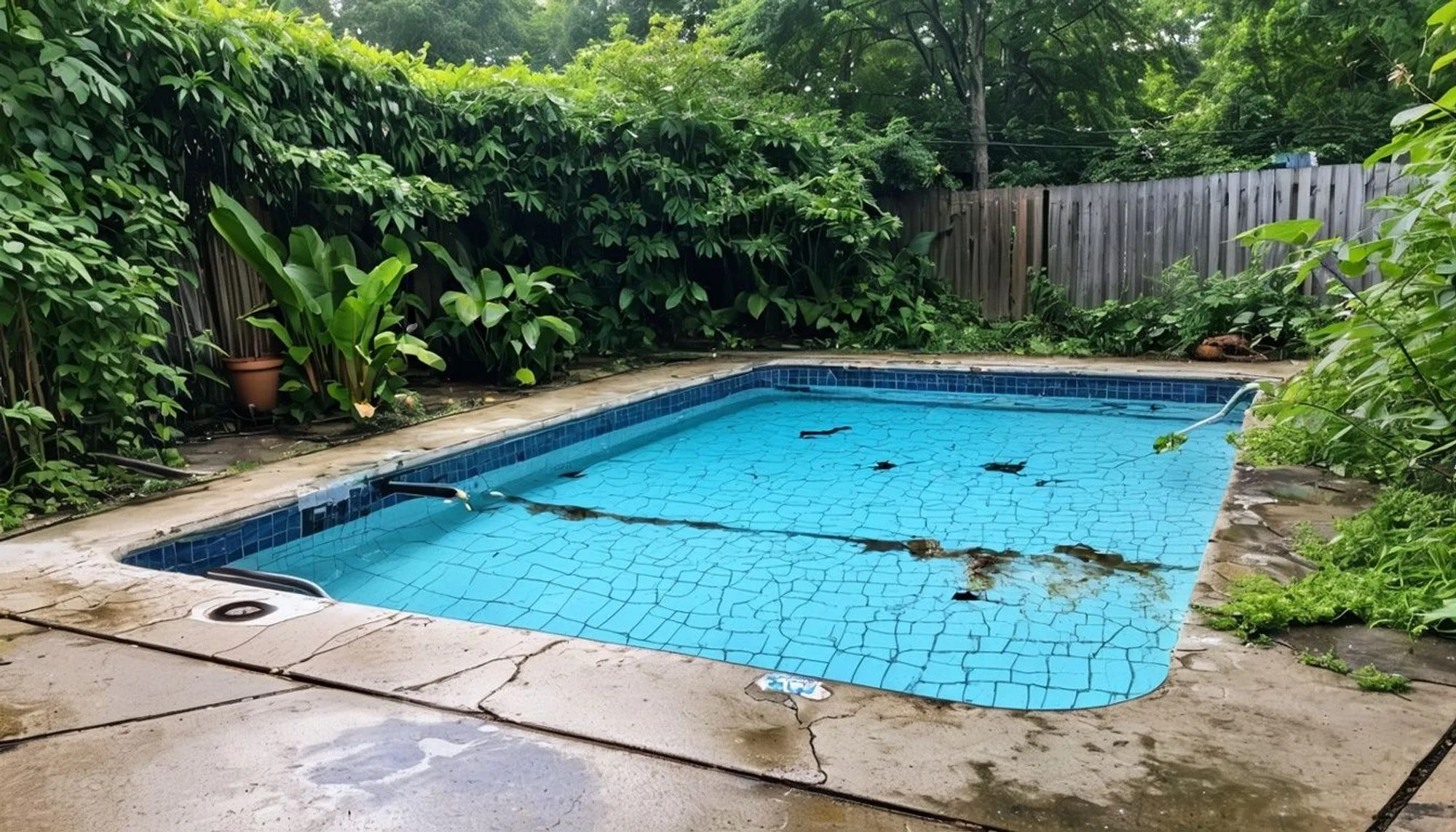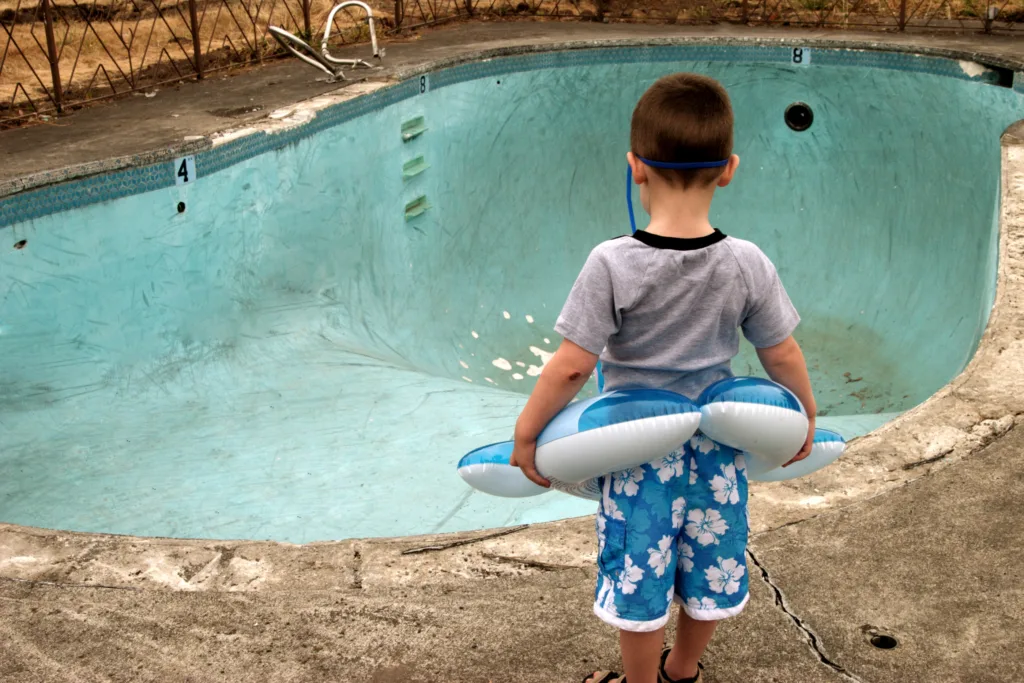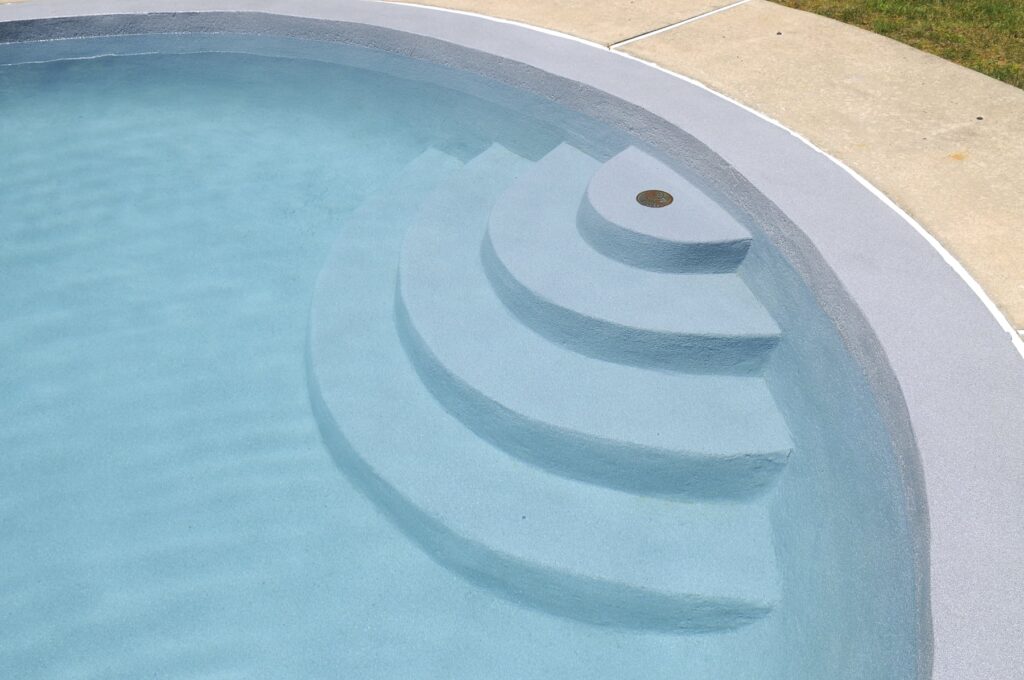What Happens If You Don’t Resurface a Pool?

Are you noticing issues with your swimming pool’s surface? Ignoring the need for pool resurfacing can lead to bigger problems down the road. This article dives into what happens if you don’t maintain and resurface your pool, covering everything from stains to structural damage.
Consequences of Not Resurfacing Your Pool
Neglecting to resurface your pool can lead to health risks, safety concerns, equipment damage, higher maintenance costs, decreased property value and potential future repairs or renovations.
Health hazards
Failure to resurface a pool can lead to health hazards as the deteriorating surfaces become breeding grounds for harmful bacteria and fungi, increasing the risk of infections for swimmers.
Corroded and cracked pool surfaces facilitate the accumulation of dirt, posing potential health risks due to poor water quality. Loose pebbles in the pool surface further exacerbate these risks by creating spaces where harmful substances can collect.
Aesthetic and safety issues
Neglecting to resurface a pool can lead to an unattractive appearance, diminishing the overall aesthetic appeal of the pool area. Cracked and deteriorating pool surfaces not only compromise the visual appeal but also pose safety risks for swimmers.
These compromised surfaces can cause cuts and abrasions, making the pool environment unsafe for use.
Cracks and surface damage on a neglected pool pose serious safety hazards due to potential injuries from rough or uneven areas. Furthermore, an unsightly pool with corroded surfaces detracts from the overall property value and could deter potential buyers if put up for sale.

Potential damage to pool equipment
Failing to resurface a pool can lead to potential damage to pool equipment, such as pumps, filters, and heaters. Cracked and deteriorating pool surfaces may release debris and particles that clog the filter, reducing its efficiency and requiring more frequent cleaning.
Additionally, corroded or eroded pool surfaces can cause damage to the pump’s impeller and seals, leading to costly repairs or replacements. The increased strain on the equipment due to poor water circulation from damaged surfaces also results in higher energy consumption for running the filtration system.
The buildup of harmful substances due to neglected resurfacing can affect automated chlorinators and heaters by causing blockages in their mechanisms or reducing their effectiveness.
The presence of cracks in a poorly maintained pool surface can also allow water seepage behind the walls where key components like pipes and electrical wiring are located, potentially resulting in further damage or safety hazards.
Higher maintenance costs and water bills
Neglecting pool resurfacing can lead to higher maintenance costs and increased water bills. As the pool surface deteriorates, cracks and erosion may cause water loss, resulting in higher water usage and expenses.
Additionally, the need for frequent cleaning due to dirt buildup on damaged surfaces can escalate maintenance costs. Proper resurfacing not only prevents these issues but also helps maintain the structural integrity of the pool, minimizing long-term repair expenditures and lowering water consumption.
By addressing deterioration promptly through resurfacing, property owners can avoid steep bills associated with extensive repairs or renovations caused by neglecting their pool’s condition.
Decreased property value
Failing to resurface your pool can cause a decrease in the value of your property. An unsightly and deteriorating pool surface can significantly impact the overall aesthetic appeal of your property, potentially deterring potential buyers or renters.
Moreover, a neglected pool with cracks, stains, and other surface damage may lead to concerns about the structural integrity of the entire property, resulting in decreased property value.
Ignoring necessary pool resurfacing could mean losing thousands of dollars in property value over time. If you’re considering selling or renting out your home with a damaged pool surface, it’s vital to address these issues promptly to maintain or even enhance your property’s worth.
Possible repairs or renovations in the future
In the future, failing to resurface the pool can lead to increased maintenance and repair costs. This may include addressing issues like leaks, cracks, and surface damage. However, proper pool resurfacing can extend the pool’s lifespan and ensure a safe swimming environment for all users.
Regularly resurfacing the pool can help prevent more costly repairs or renovations down the line.
Resurfacing your pool at appropriate intervals with relevant materials such as fiberglass or plaster allows for ongoing care, which in turn helps avoid extensive future renovations. Using a premium material like aquaBRIGHT or polyFIBRO from ecoFINISH can last 10 years or more.

Conclusion
Neglecting pool resurfacing can lead to health hazards from bacteria and dirt. It may also cause unsightly surface damage, increased water bills, and decreased property value. Failures in upkeep can result in costly repairs and reduced enjoyment for swimmers.
To avoid these issues and ensure long-term benefits, it’s crucial to consider an ecoFINISH coating. This innovative solution provides a durable, vibrant finish that resists fading, staining, and chipping, allowing you to enjoy a beautiful and safe pool for years to come. Investing in ecoFINISH will not only enhance your pool’s appearance but also significantly reduce maintenance costs and extend its lifespan.
FAQs
If you don’t resurface a pool, the surface can deteriorate which may lead to damage that requires costly repairs and restoration.
Yes, you can resurface a pool yourself, but it requires significant skill, proper tools, and materials. For the best results and to avoid potential mistakes, it’s best to hire professionals who have the experience and expertise to ensure a smooth and long-lasting finish.
Yes, regular pool inspections are critical in identifying early signs of damage like cracks or rough spots on the surface that indicate it’s time for a renovation or repair.
The best type of pool resurfacing depends on factors such as budget, desired durability, and maintenance preferences. ecoFINISH coatings are highly regarded for their longevity and low maintenance requirements.
Absolutely! Ignoring necessary renovations could result in extensive damages not just on the surface but also potentially affecting the structural integrity of your swimming pool over time.
